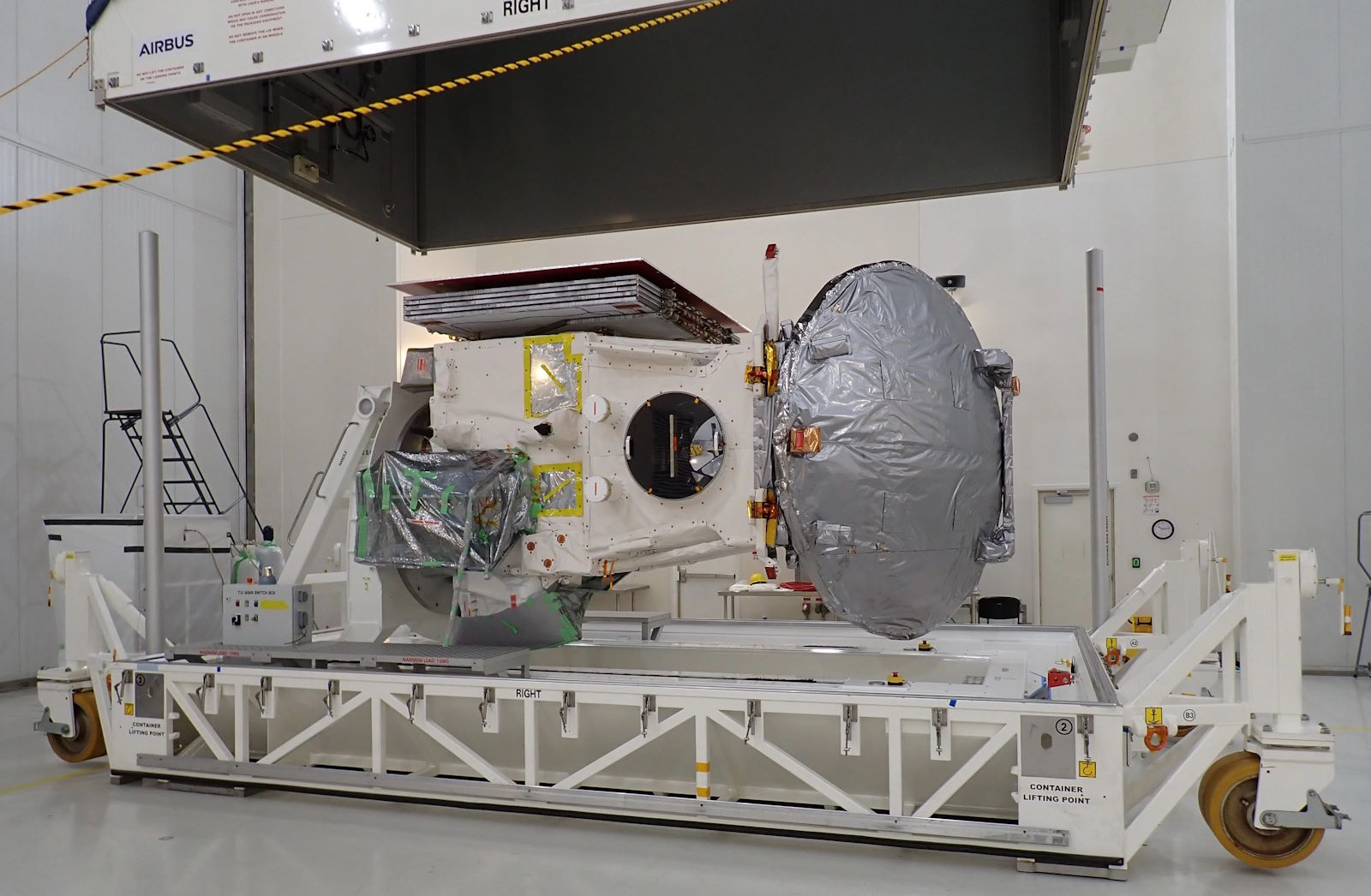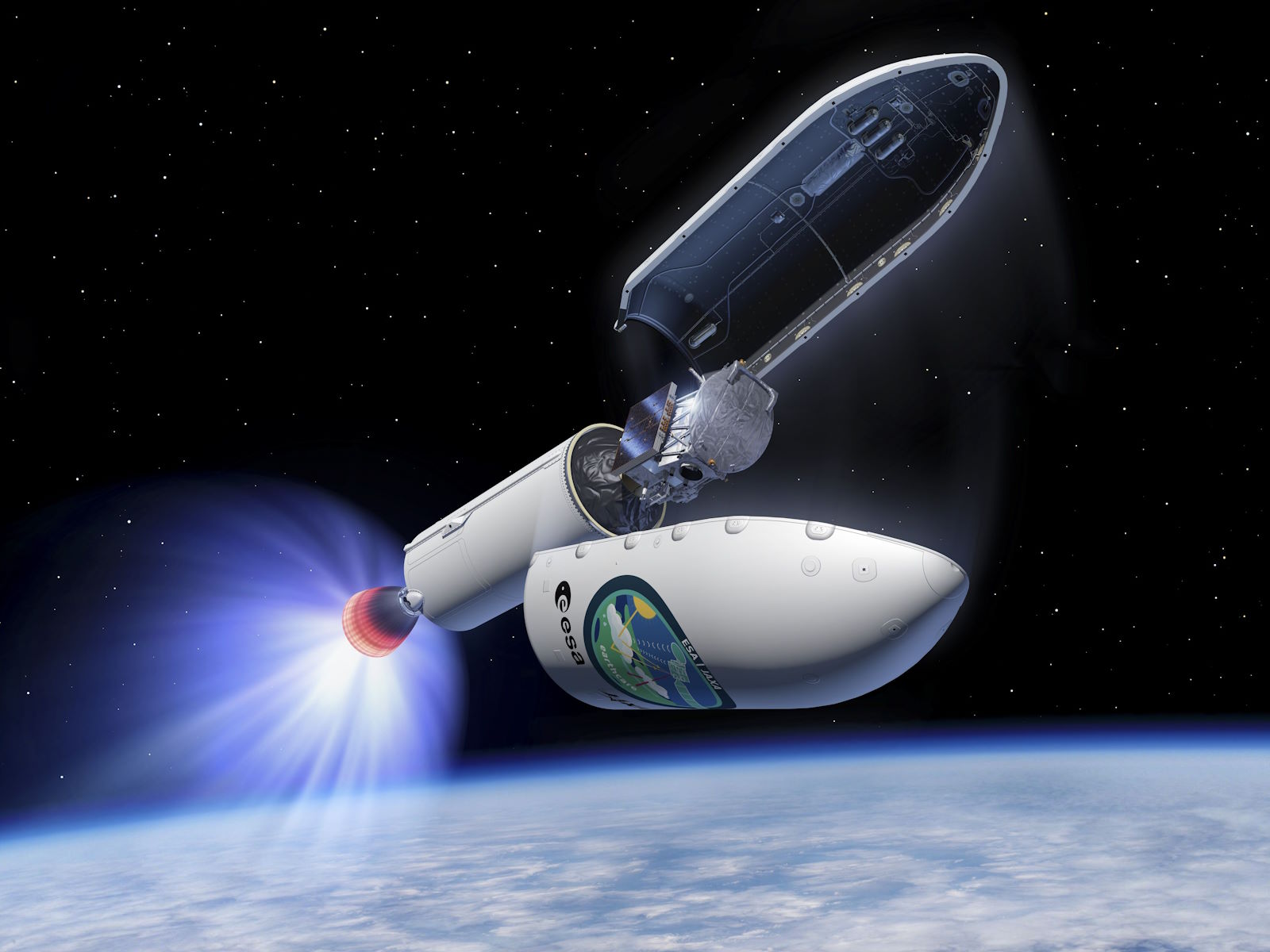The joint Euro-Japanese EarthCARE satellite began its mission to improve our understanding of Earth’s climate on Tuesday, with a launch atop a SpaceX Falcon 9 rocket. Liftoff from the space base’s Space Launch Complex 4E (SLC-4E) in Vandenberg, California, took place at 3:20 p.m. Pacific Time (10:20 p.m. UTC).
Earth Cloud, Aerosol and Radiation Explorer (EarthCARE) is a joint project of the European Space Agency (ESA) and the Japan Aerospace Exploration Agency (JAXA), and the sixth Earth Explorer mission launched under the Planet program living ESA. The satellite, also called Hakuryuu – Or White Dragon — from JAXA, carries four instruments that will study clouds and aerosols — fine particles and liquid droplets suspended in Earth’s atmosphere — and their impact on the planet’s climate.
By bringing together a suite of different instruments on a single satellite, EarthCARE will be able to take different types of measurements that complement each other, allowing scientists to better understand how clouds and atmospheric aerosols interact with solar radiation and how that affects solar radiation. the planet’s radiation balance – the difference between the energy the Earth receives from the Sun and that it radiates into space.
Scientists have long known that clouds impact Earth’s radiation budget, both in terms of reflecting sunlight back into space and absorbing heat that would otherwise have been radiated back to Earth. ‘space. The height and structure of the cloud, its water content and the presence of different types of aerosols can change the way it interacts with this system. By providing a comprehensive picture of the internal structure of clouds, EarthCARE will help refine models used to predict changes in Earth’s climate.
The 2,200 kg EarthCARE satellite was developed by a multinational consortium, with Airbus Defense and Space as prime contractor. The energy required for the mission will be generated by a single deployable solar panel, measuring 11 m long. The satellite is expected to operate for at least three years in a circular sun-synchronous orbit at an altitude of 393 km and an inclination of 97 degrees.
Development of the satellite began in 2008, with the signing of a contract between ESA and Astrium Satellites, which joined Airbus in 2013. The four instruments were built separately before being shipped to be integrated with the rest of the spacecraft spatial. Testing was carried out at the European Space Research and Technology Center in the Netherlands, before final checks at the Airbus facility in Friedrichshafen, Germany. In March 2024, the satellite was shipped to the launch site.
EarthCARE’s four instruments include an Atmospheric LIDAR (ATLID), Cloud Profiling Radar (CPR), Multispectral Imager (MSI), and Broadband Radiometer (BBR). Atmospheric LIDAR (light detection and ranging) is used to measure altitudes of cloud tops and aerosols. The instrument uses a laser that emits 26 nanosecond ultraviolet pulses at a wavelength of 355 nm, and a 62 cm telescope as a receiver. The laser pulses will be transmitted into the atmosphere, where they will be dispersed by particles and water molecules. Some of this information will be reflected back to the receiver, with the round trip time used to calculate the altitude at which the broadcast occurred. Comparing the wavelength of the scattered light to the emitted light will also help determine the type of scattering that occurred and, therefore, infer the type of particle that caused it to scatter.
The ATLID instrument aboard EarthCARE was built by Airbus and weighs approximately 500 kg.
The CPR will allow EarthCARE to penetrate clouds and collect data on their vertical structure. This instrument is an important part of JAXA’s contribution to the mission and was built by the Japanese NEC Corporation. The CPR will use a millimeter-wave Doppler radar, broadcasting 3.3-microsecond pulses into the atmosphere at a frequency of 94 gigahertz. The backscattered signals are received using the instrument’s 2.5 m antenna. In addition to making it possible to determine the internal structure of the clouds, the study of the Doppler shift of the signal will also make it possible to measure the vertical movement of the cloud and the elements of its structure.
LAUNCHING SOON🚀🛰️
THE #EarthCARE The satellite carries four instruments for observing clouds and aerosols with four synergistic detection methodologies.
The instruments provide key measurements to answer critical scientific questions related to the role that clouds and… pic.twitter.com/4GqCnoNRve
– ESA Earth Observation (@ESA_EO) May 26, 2024
Built by Thales in the United Kingdom, the BBR consists of three telescopes measuring the flux of radiation detected from Earth. One of its telescopes points in the direction of the nadir, that is, directly downward towards Earth, while the others will target points along the satellite’s path that lie ahead and behind. back from its current position. This allows the same point to be observed from three different angles as the satellite moves along its orbit.
Each telescope has a single mirror and a linear sensor. A rotating chopper drum alternates the telescope’s view between unfiltered light, a filter that only passes shortwave radiation, and a constant temperature surface to help maintain calibration.
The shortwave filter limits BBR measurements to solar radiation reflected by the Earth only. Subtracting this value from the total unfiltered reading will calculate the amount of longwave radiation emitted by the Earth itself. These readings are important for monitoring the planet’s radiation budget.
MSI is an imaging system consisting of two individual cameras with a common electrical and control segment, developed by Surrey Satellite Technology Ltd in the United Kingdom. A thermal infrared camera operates in three different wavelength channels, while a second camera produces images in the visible, near-infrared, and two shortwave infrared channels. Observations using MSI support data from other EarthCARE instruments by providing context to the data collected by ATLID and CPR and to spectral data to help calibrate BBR measurements. MSI has a resolution of up to 500 m, covering a 150 km swath of the earth’s surface.

The EarthCARE satellite, pictured being removed from its shipping container after arriving in Vandenberg. (Credit: ESA)
EarthCARE will be launched by SpaceX aboard a Falcon 9 rocket, a two-stage vehicle consisting of a reusable booster and a replaceable second stage. The launch will take place from Space Launch Complex 4E (SLC-4E) at Vandenberg Space Force Base in California.
The booster used for the EarthCARE mission is the B1081.7, which made its seventh flight with this launch. The B1081 made its first flight on August 26, 2023, carrying Dragon Endurance on the Crew-7 mission to the International Space Station, followed by the CRS-29 Cargo Dragon mission in November. After launching a group of Starlink satellites in December, its fourth launch put NASA’s PACE satellite into orbit in February. The B1081 was then used for the Transporter-10 rideshare launch in March, which marked its first launch from Vandenberg, before its most recent mission, another Starlink launch, on April 7.
ESA had initially selected the Soyuz rocket to deploy EarthCARE, with the launch to be carried out by Arianespace from the Guiana Space Center in Kourou, French Guiana. Following Russia’s invasion of Ukraine in 2022, Arianespace’s partnership with Russia to conduct Soyuz launches ended and the launch was moved to the new Vega-C rocket. This was later changed again to 2023 for Falcon 9, a decision that was made both due to delays following Vega-C’s failed launch in December 2022 and modifications that would have been necessary to its fairing of payload to accommodate the EarthCARE satellite.
The Falcon 9 completed a Return to Launch Site (RTLS) flight, with the first stage successfully returning to land in Landing Zone 4 (LZ-4) near the launch pad after completing its role in the mission Tuesday. The ability to recover and reuse the first stage has largely contributed to the success of Falcon 9: since its maiden flight in June 2010, it has already established itself as one of the most stolen rockets ever built. By some metrics, EarthCARE will mark the 350th flight or mission of the Falcon 9 and Falcon Heavy family: the first if the 2020 Crew Dragon In-Flight Abort (IFA) suborbital test is included in the count; and the latter if the 2016 Amos 6 mission, which saw the rocket explode on the launch pad during preparations for a static firing test two days before the planned launch, is included instead.
Despite its high flight rate, the Falcon 9 has also proven to be one of the most reliable rockets in service. Aside from Amos 6, it has suffered only one in-flight failure and one additional partial failure to date, and has achieved 320 consecutive successful launches from Amos 6 on Falcon 9 and Falcon Heavy vehicles – the latter using two additional boosters burning in parallel. with the first stage to enable it to launch heavier payloads to higher orbits.

Rendering of the second stage of the Falcon 9 and EarthCARE, at fairing separation. (Credit: ESA/P. Carril)
For Tuesday’s mission, the single-core Falcon 9 will be sufficient to place EarthCARE into its planned sun-synchronous orbit, with enough performance remaining to allow the booster’s return to the launch site. Falcon 9 uses RP-1 kerosene propellant with liquid oxygen (LOX) as the oxidizer. Loading of propellant and LOX occurs during the final 35 minutes of the countdown, with the first stage’s nine Merlin-1D engines igniting approximately three seconds before the scheduled liftoff time, or T0. After takeoff, Falcon will follow a southward trajectory.
The first stage will ascend for approximately two and a half minutes before stopping, separating and beginning its return flight to LZ-4. The second stage will fire its Merlin Vacuum engine – a version of the Merlin optimized for use in space – to continue the mission. Shortly thereafter, the payload fairing will separate from EarthCARE at the nose of the rocket. The second stage will burn for just over six minutes to reach EarthCARE’s planned orbit, with spacecraft separation occurring approximately ten minutes after liftoff.
Once separated from the Falcon 9, EarthCARE will need to deploy its solar array and other key systems and begin on-orbit testing and commissioning before it can enter service.
(Main image: Time-lapse image of Falcon 9 B1081-7 of the EarthCARE launch from Vandenberg Space Station. Credit: Pauline Acalin for NSF)